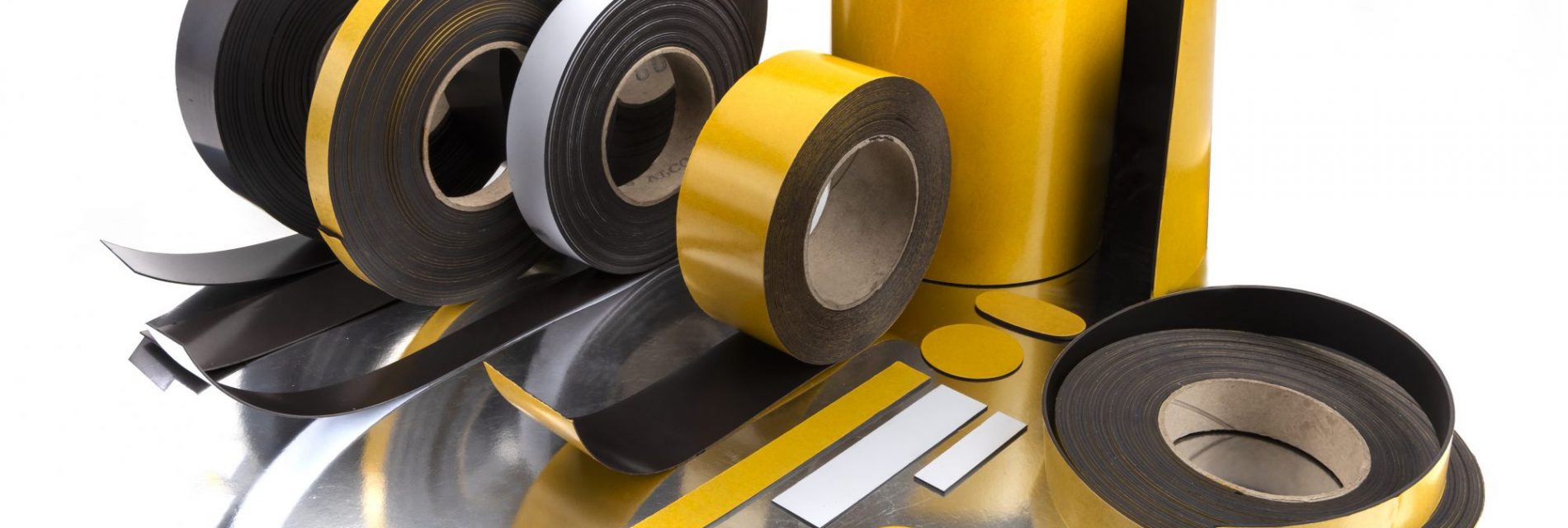ORIGINS AND COMPOSITION
It is a flexible material composed of 90% ferrite powder and 10% elastomer binder. At Euromag this binder is rubber (Nitrile or PEC).
MANUFACTURING PROCESS
The product is manufactured using the so-called calendering technique: the initial preparation is mixed by grinding. The initial preparation is mixed by grinding. A granulate is obtained, which falls between two cylinders that rotate in opposite directions, and a sheet of 15 to 20 mm thickness is obtained by pressing, called a blank, which undergoes several passes until the final thickness is reached.
This operation also creates the anisotropy of the material. Under the effect of pressure, the elementary particles of strontium hexa-ferrite, whose average diameter is 15 times the thickness, all orient themselves in the same direction. This is a cold mechanical orientation (or almost), whereas for all other magnetic materials this orientation is obtained at high temperature. This material is said to be anisotropic, which means that it has a preferred magnetic orientation, the thickness.
Another manufacturing technique is extrusion. The material is forced through a die which gives it its final dimensions. The advantage of this is that complicated shapes can be made (refrigerator door seals, label holders). This technique does not favour anisotropy, which is obtained by creating a magnetic field.
CARACTERISTICS
It is a material with very good slip resistance due to the rubber.
The ageing of the product has an influence on the dimensions if it is not vulcanised.
SENSITIVITY TO CORROSION
APPLICATIONS
It is a product whose quality/price ratio finds its place in all sectors of industry and POS.

